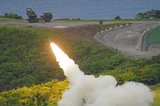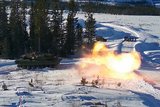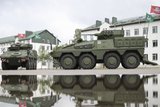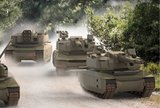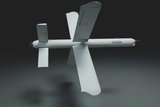US Army working on standardised weapon fire control
The US Army's Armament Research, Development and Engineering Command (ARDEC) is working to build a common fire control system across weapons platforms, it was announced on 23 April.
This common system would include interface, software and hardware. Ralph Tillinghast, director of the collaboration and innovation laboratory at ARDEC, spoke about its efforts to build the system at the 2015 Armament Systems Forum.
Tillinghast noted that this commonality would decrease testing, cost, development time and training and increase reliability, maintainability and profitability for the army. Warfighters would benefit from a familiar interface for fire control and not have to learn new systems as new products are developed.
He said that another benefit could be that soldiers would get their hands on new weapons systems more quickly because software and hardware could be reused.
However, he mentioned that sharing a single fire control system would increase the risk of a technological glitch or cyber-attack affecting all weapons systems at the same time.
Tillinghast said that ARDEC has made major advancements in the development of a common fire control system. It was able to transplant the software and hardware of the 120mm Mortar Fire Control System – Heavy to the dismounted version, including the trucks, radios and displays. It has been able to do the same for other weapons systems, including the DragonFire II, M119 howitzer and expeditionary fire support system demo.
ARDEC is currently pulling legacy systems from older weapons and replacing them with common hardware and software.
Tillinghast said that commonality has been applied to mortars and towed artillery so far, but the common fire standards have yet to be applied to other systems, like missiles. Talks are underway for another facet that is yet to be addressed: cross-service commonality.
Discussions that are underway throughout the services include finding commonality for fire control that includes common networks, geodetic translation, mapping, peripheral interface and meteorological data.
Other discussions are focusing on how to make the systems secure, especially as the services move toward cloud-based computing. Besides software, there are discussions about getting to common hardware solutions.
Tillinghast said, 'We want to get to the point where we can plug different displays in - such as an inertial navigation unit or weapons sensors - and the computer recognizes and accepts it.'
More from Land Warfare
-
Germany signs multi-billion-dollar deals for 6x6 CAVS and GDELS Eagle vehicles
The order is a further boost for the Common Armoured Vehicles System programme which has notched notable successes in the past 12 months. The first vehicle, made in Finland, will be delivered next year with local production expected to ramp up in 2027.
-
![Rheinmetall and KNDS tank tie-up narrows trans-European options]()
Rheinmetall and KNDS tank tie-up narrows trans-European options
The French and German governments signed an agreement in June 2018 to cooperate on the development of a new main battle tank under the Main Ground Combat System programme but the effort has struggled. This new agreement may damage it further.
-
![Hungary set to begin using Hero 400 loitering munitions]()
Hungary set to begin using Hero 400 loitering munitions
Developed by Israel's Uvision and with systems being sold in the thousands to multiple European NATO countries and the US, the Hero family of loitering systems is also in production in the US and Italy, the latter through Rheinmetall.
-
![Light Reconnaissance Strike – enabling a vital mission set (Studio)]()
Light Reconnaissance Strike – enabling a vital mission set (Studio)
A new system-of-systems concept will unlock digital integration of sensors and weapons for Light Forces, allowing them to shape the battlefield environment on their own terms and upgrade legacy platforms.










